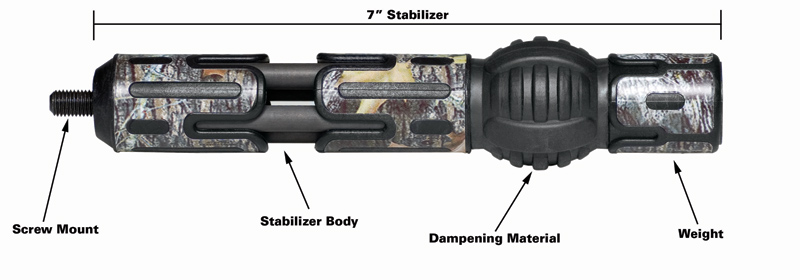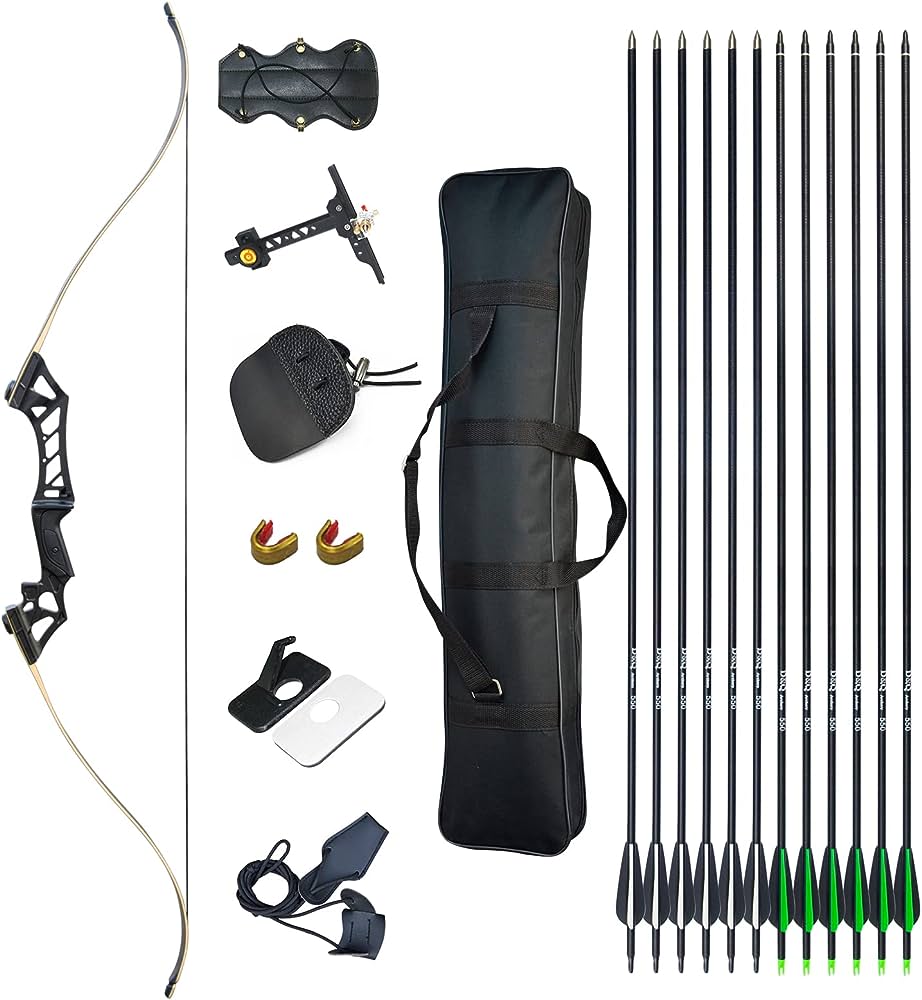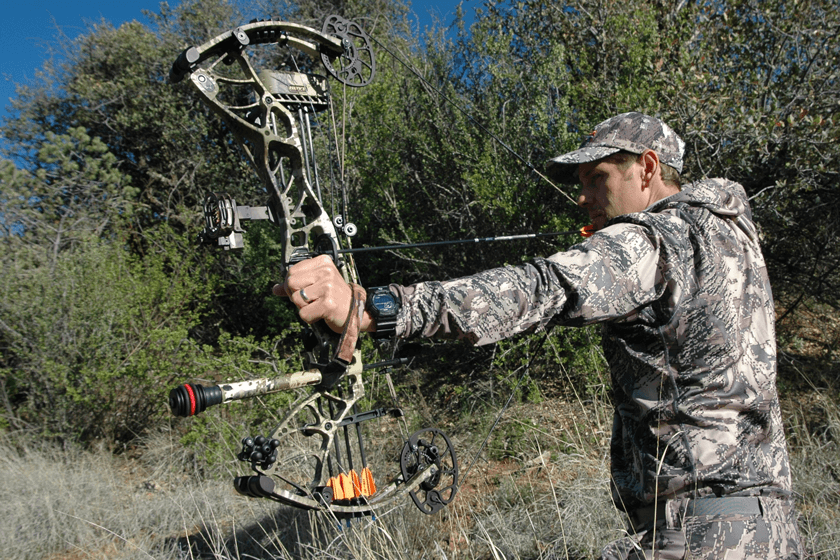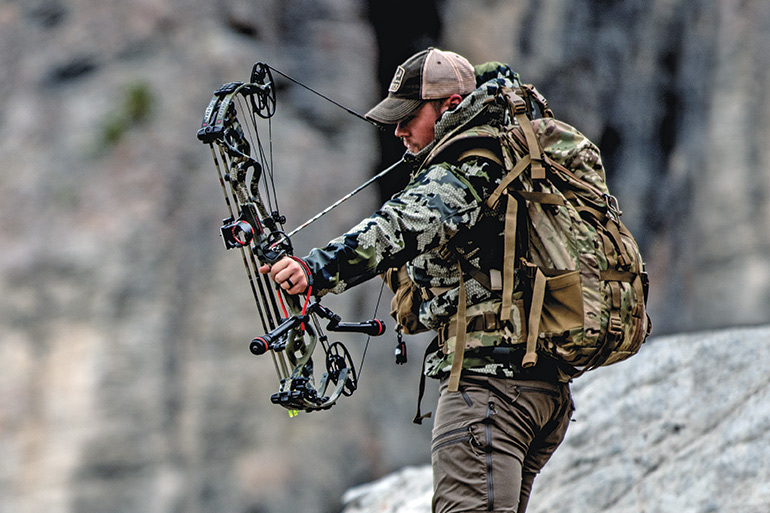Archery stabilizers work by reducing bow torque and vibrations, improving accuracy and aim. These devices, typically made of metal or carbon, attach to the bow and redistribute weight to create balance and stability in the shooter’s hand.
The use of stabilizers helps to counteract the natural movement and recoil of the bow upon release, resulting in a smoother shot and increased precision. Additionally, stabilizers can dampen shock and absorb vibrations, minimizing hand shock and overall bow noise.
By providing a steady and controlled platform, archery stabilizers contribute to consistent and dependable performance for archers of all levels.
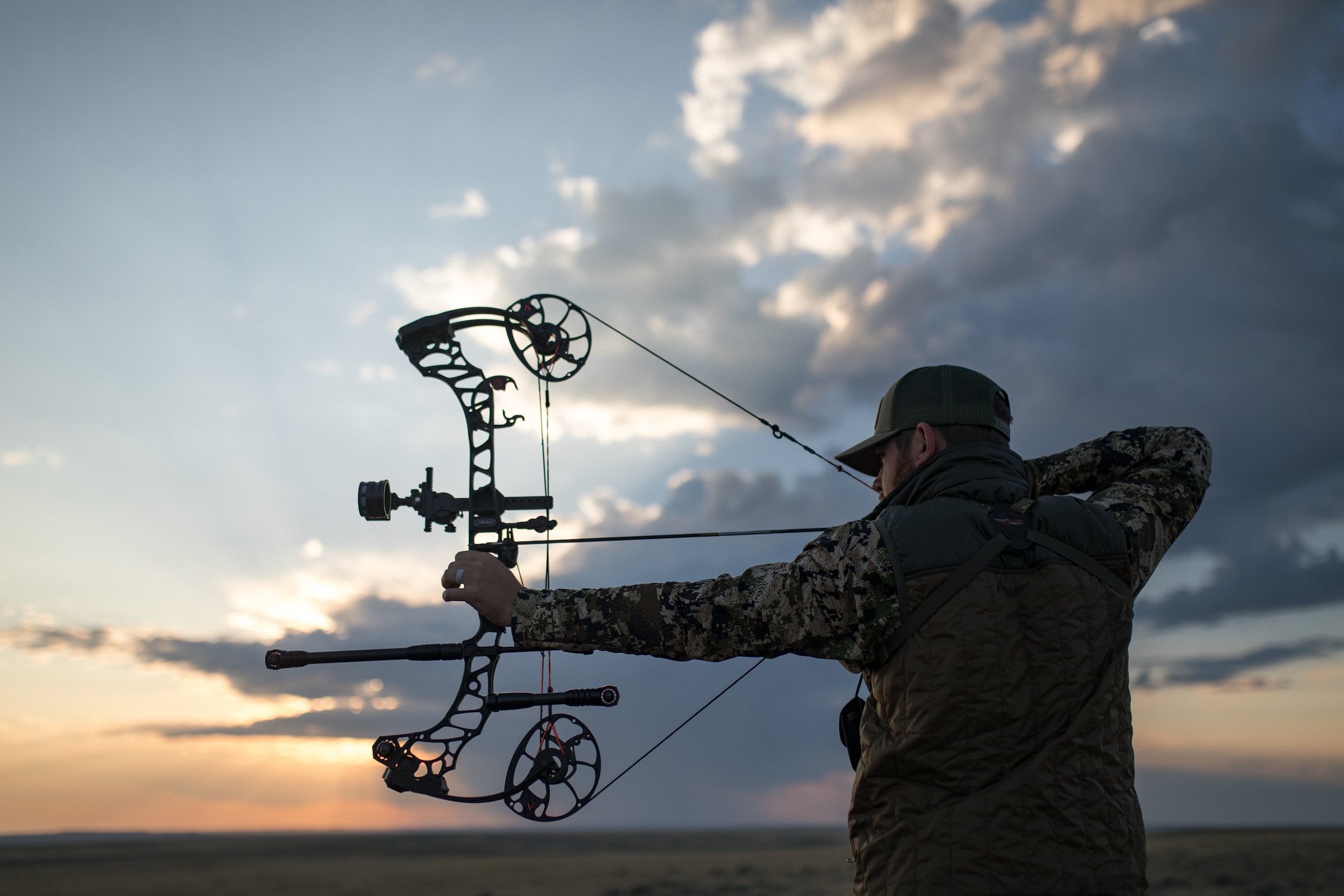
Credit: www.mathewsinc.com
The Role Of Archery Stabilizers
What Are Archery Stabilizers And Why Are They Important?
Archery stabilizers are crucial accessories that help improve the performance and accuracy of archers. These devices are typically attached to the bow and serve multiple purposes to enhance the shooting experience. Here is a breakdown of their significance:
- Reduced torque: Stabilizers are designed to minimize the torque or twisting motion that occurs when an archer releases the bowstring. This reduction in torque allows for more consistent and accurate shots.
- Balancing the bow: By adding weight to the front of the bow, stabilizers help balance the overall weight distribution. This proper balance prevents the bow from tipping forward during the aiming process, resulting in steadier shots.
- Vibration dampening: Archery stabilizers are equipped with dampening materials that absorb vibrations generated upon releasing the arrow. This reduces noise, shock, and hand shock, providing a smoother shooting experience.
- Improved stability: The additional weight and length of stabilizers increase the inertia of the bow, making it less sensitive to small movements. This stability minimizes the impact of external factors such as wind or slight hand tremors, ensuring more accurate shots.
- Aiding in aiming: Stabilizers can feature additional features like bubble levels or sight extension bars that assist in aligning the bow accurately. These aids help archers maintain consistent positioning and aim more precisely.
- Customization: Stabilizers come in varying lengths, weights, and designs, allowing archers to customize their setup according to their preferences and shooting style. This personalization helps optimize performance and accuracy.
Overall, archery stabilizers play a vital role in enhancing accuracy, stability, and consistency in archery, enabling archers to achieve precise and reliable shots.
Components Of Archery Stabilizers
The Main Components Of A Typical Archery Stabilizer
Archery stabilizers play a crucial role in improving accuracy and stability during archery shots. To understand how they work, it is essential to familiarize oneself with the main components of a typical archery stabilizer. These components work together to help stabilize the bow and enhance the overall shooting experience.
Here are the main components of a typical archery stabilizer:
- ###main rod:
- The sturdy main rod forms the backbone of the stabilizer.
- It is usually made of lightweight materials like carbon fiber or aluminum alloy.
- The length of the main rod can vary, depending on the archer’s preference and shooting style.
- The main rod helps reduce vibration and absorbs shock during the shot, resulting in greater stability.
- ###weights:
- Archery stabilizers often include weights that can be attached to the main rod.
- These weights allow archers to fine-tune the stabilizer’s balance and mass distribution.
- By adjusting the weights, archers can customize how the stabilizer affects the balance of the bow.
- Adding weights to specific locations can counterbalance the bow’s weight distribution, reducing torque and enhancing precision.
- ###dampeners:
- Dampeners are components that help minimize unwanted vibrations and noise generated by the bow.
- They are typically made of rubber or similar materials that absorb and dampen vibrations effectively.
- Dampeners help reduce hand shock and bow movement during the shot, resulting in a smoother and more controlled release.
- ###end caps:
- End caps are attached to the ends of the stabilizer rod.
- They serve multiple purposes, including protecting the stabilizer rod from damage and providing stability during aiming and release.
- Some end caps even incorporate additional dampening materials to further mitigate vibrations.
- ###quick disconnects:
- Quick disconnects are mechanisms that allow archers to easily attach and detach the stabilizer from the bow.
- These convenient devices provide flexibility for transportation and storage.
- Quick disconnects also allow archers to swap out stabilizers quickly, depending on their shooting requirements.
Understanding the function and purpose of each component in an archery stabilizer gives archers the knowledge and control they need to optimize their shooting performance. By utilizing the right combination of these components, archers can achieve improved stability, reduced vibrations, and enhanced accuracy.
Invest in a high-quality archery stabilizer with the appropriate components to take your archery skills to the next level.
How Archery Stabilizers Work
Archery stabilizers play a crucial role in improving a shooter’s accuracy and stability. By counterbalancing bow torque and reducing unwanted vibrations, these essential accessories contribute to a more consistent and precise shot. In this section, we will explore the physics behind the effectiveness of archery stabilizers and delve into how they minimize bow torque.
The Physics Behind The Effectiveness Of Archery Stabilizers
- Weight distribution: Stabilizers consist of a central rod with additional weights strategically placed along its length. This design helps distribute the weight of the bow more evenly, which in turn improves balance and reduces the shooter’s strain. The stabilizer’s weight distribution counteracts the forward heaviness of the bow, resulting in a more comfortable and stable shooting experience.
- Vibration dampening: A key function of stabilizers is to minimize bow vibrations, which can negatively impact accuracy. Stabilizers are engineered with materials like rubber or gel that absorb and dissipate these vibrations, reducing hand shock and bow movement. By absorbing these vibrations, stabilizers enhance shooters’ control and enable them to execute a clean, repeatable shot.
- Torque reduction: Bow torque, or the rotational force applied to the bow grip, can cause the bow to rotate unpredictably upon release, thus affecting accuracy. Stabilizers counteract this torque by utilizing their weight distribution and length. As the stabilizer extends to the front of the bow, it creates a moment arm, resisting the rotational force. This counteracting torque helps maintain the bow in proper alignment during the shot, resulting in improved accuracy.
- Stabilization of bow movement: The length and weight of stabilizers allow them to provide stability by dampening any unwanted bow movement. When the archer releases the string, the stabilizer helps prevent the bow from rotating, ensuring a straighter and more predictable arrow trajectory. This stabilization effect is particularly useful when shooting at longer distances, as even the slightest movement can greatly affect accuracy.
- Improved aiming and follow-through: By minimizing bow torque and dampening vibrations, stabilizers also facilitate better aiming and follow-through. With reduced bow movement and improved stability, archers can focus more on proper alignment and aiming, enabling them to maintain target accuracy. Moreover, the stabilizer’s weight at the front of the bow aids in maintaining a smooth follow-through after the release, contributing to consistent shot execution.
Understanding the physics behind archery stabilizers provides valuable insights into their effectiveness in improving accuracy and stability. By minimizing bow torque, dampening vibrations, and stabilizing bow movement, these accessories play a pivotal role in enhancing a shooter’s performance. Incorporating a high-quality stabilizer into your archery setup can greatly contribute to achieving consistent, accurate, and satisfying shots.
Balancing And Tuning Archery Stabilizers
The Importance Of Proper Balancing And Tuning For Stabilizers
When it comes to archery stabilizers, balancing and tuning play a crucial role in enhancing your shooting performance. Properly balancing and tuning your stabilizers can provide stability, reduce vibrations, and improve your accuracy.
Here are some tips and techniques for achieving optimal balance:
- Start with a level bow: Before adjusting your stabilizers, make sure your bow is leveled to create a solid foundation for balance.
- Add weights strategically: Experiment with adding weights to your stabilizer system to achieve the desired balance. Placing weights closer to the bow riser can increase stability, while adding weights further away can reduce vibration.
- Fine-tune with small adjustments: Make small adjustments to weight distribution until you find the optimal balance. Remember that even a slight change in weight placement can greatly impact the stability of your shot.
- Consider the length of stabilizers: Longer stabilizers provide more stability, while shorter ones offer better maneuverability. Find the right balance between stability and comfort for your shooting style.
- Use a stabilizer dampener: Stabilizer dampeners can absorb vibrations and reduce noise during the shot. Adding a dampener to your stabilizer system can further enhance balance and stability.
Tips And Techniques For Adjusting Stabilizers For Different Shooting Styles
Different shooting styles require different adjustments to optimize performance. Here are some ways to adjust your stabilizers for various shooting styles:
- Target shooting: For precision in target shooting, focus on achieving maximum stability. Opt for longer stabilizers and distribute the weight evenly for a balanced and steady aim.
- Bowhunting: When it comes to bowhunting, maneuverability is key. Use shorter stabilizers to avoid any hindrance while moving through tight spaces. Distribute the weight towards the bow riser to maintain stability while on the hunt.
- 3d archery: In 3d archery, where shooting angles and distances vary, versatility is important. Experiment with adjustable stabilizers to adapt to different shooting scenarios. Make sure to fine-tune the balance based on the specific target and distance.
Remember, finding the optimal balance and tuning for your stabilizers may require some trial and error. Take the time to experiment and make adjustments according to your shooting style and preferences. With proper balancing and tuning, you can enhance your archery experience and improve your shooting accuracy.
Different Types Of Archery Stabilizers
Exploring The Various Types Of Stabilizers Available:
Plain paragraph: archery stabilizers are essential accessories that help balance and stabilize the bow during shooting. They come in various types, each offering a unique set of benefits to archers. Let’s explore the different stabilizers commonly used in archery:
Bullet points:
- Long rod stabilizer: This type of stabilizer attaches to the front of the bow and extends outward. It provides maximum stabilization by adding weight and increasing balance. The length of the rod can vary, allowing archers to customize their setup according to personal preference.
- Side bar stabilizer: As the name suggests, this stabilizer attaches to the side of the bow, opposite to the bow arm. It helps counteract the torque generated when releasing the bowstring and enhances stability during the shot. Side bar stabilizers are particularly useful in target archery.
- V-bar stabilizer: V-bar stabilizers work in conjunction with side bar stabilizers to provide additional stabilization. They form a v-shape when attached to the bow, minimizing bow torque and enhancing overall balance. V-bar stabilizers are commonly used in competitive archery.
- Counterbalance stabilizer: This type of stabilizer is designed to reduce bow weight and offset the weight of other accessories, such as the sight or quiver. It attaches to the back of the bow and helps maintain balance throughout the shot.
- Static stabilizer: Unlike the other types, static stabilizers do not extend outward. They are shorter in length and mainly focus on absorbing vibrations and reducing noise produced during the shot. Static stabilizers are ideal for hunters who require a compact setup.
Pros And Cons Of Each Type:
Plain paragraph: each type of stabilizer has its advantages and considerations. Here are the pros and cons of the various archery stabilizers:
Bullet points:
- Long rod stabilizer:
- Pros: Provides maximum stabilization, reduces bow torque, and improves balance during the shot.
- Cons: Can be cumbersome in certain shooting situations, can affect maneuverability, especially in hunting scenarios.
- Side bar stabilizer:
- Pros: Minimizes bow torque, enhances stability, and improves shot consistency.
- Cons: May require additional adjustments to achieve optimal balance, may slightly increase the overall weight of the bow setup.
- V-bar stabilizer:
- Pros: Excellent for balancing the bow, reduces bow torque, and offers superior stability.
- Cons: Requires precise setup and adjustment, may limit maneuverability in certain shooting styles.
- Counterbalance stabilizer:
- Pros: Helps offset weight imbalance caused by other accessories, enhances overall balance during the shot.
- Cons: Adds weight to the back of the bow, potentially affecting handling and maneuverability.
- Static stabilizer:
- Pros: Absorbs vibrations, reduces noise, and provides a compact setup.
- Cons: Offers less stabilization compared to other types, may not balance the bow as effectively.
Choosing The Right Stabilizer For Your Needs:
Plain paragraph: selecting the most suitable archery stabilizer depends on various factors, including shooting style, experience level, and personal preferences. Here are some considerations to help you choose the right stabilizer:
Bullet points:
- Determine your shooting style: Consider whether you primarily engage in target archery or hunting. Different stabilizers suit different shooting disciplines.
- Assess your experience level: Beginners may benefit from longer and more stable stabilizers, while experienced archers may prefer specialized setups for their specific needs.
- Experiment and consult experts: Try different stabilizers and seek advice from seasoned archers or professionals to find the stabilizer that feels most comfortable and improves your overall shooting performance.
- Balance the trade-offs: Consider the advantages and disadvantages of each type of stabilizer and find a balance that works with your shooting style, bow setup, and shooting objectives.
Remember, the right archery stabilizer can enhance your shooting consistency, improve accuracy, and enhance your overall archery experience. Explore the various types available, consider the pros and cons of each, and make an informed decision that aligns with your needs and preferences.
Happy shooting!
Frequently Asked Questions About Archery Stabilizers
Common Questions And Concerns Regarding Archery Stabilizers:
- What is the purpose of an archery stabilizer?
- A stabilizer is an essential accessory in archery that helps improve accuracy and balance by reducing bow movement and vibration.
- How does an archery stabilizer work?
- The primary function of a stabilizer is to absorb vibrations and oscillations created when an archer releases the bowstring. It acts as a counterbalance to minimize the effect of torques and forces that can negatively impact aim and accuracy.
- Are stabilizers necessary for all archers?
- While stabilizers are not mandatory, they offer significant benefits to archers of all skill levels. Beginners can benefit from improved stability, and experienced archers can enhance their precision with the help of stabilizers.
- What are the main components of an archery stabilizer?
- Archery stabilizers typically consist of multiple parts, including a main rod, weights, dampeners, and mounting brackets. The main rod provides stability, weights add balance, dampeners reduce vibrations, and mounting brackets securely attach the stabilizer to the bow.
- How long should an archery stabilizer be?
- The length of the stabilizer depends on personal preferences, shooting style, and the type of archery being practiced. However, a general guideline is to use a longer stabilizer for target archery and a shorter one for bowhunting, as longer stabilizers offer more stability.
- Can i customize my stabilizer setup?
- Yes, archery stabilizers are highly customizable. You can adjust the weight distribution by adding or removing weights, experiment with different lengths, and incorporate various dampening materials to find the perfect setup that suits your shooting style.
Tips For Troubleshooting Common Stabilizer Issues:
- Excessive bow vibration:
- Check if the stabilizer weights are securely fastened. Loose weights can cause increased vibrations. Additionally, consider using additional dampeners to absorb excess vibrations.
- Bow imbalance:
- If your bow feels unbalanced, try adjusting the weight distribution on your stabilizer. Move the weights forward or backward until you achieve a better balance.
- Stabilizer interference:
- Sometimes, the stabilizer might interfere with other accessories or hinder your aiming. Experiment with different stabilizer lengths or configurations to minimize any interference and find the most comfortable setup.
- Incorrect stabilizer setup:
- Ensure that your stabilizer is properly aligned and mounted on your bow. Check if all components are secure, and make any necessary adjustments to achieve optimal performance.
- Overcompensation in shot follow-through:
- If you find that your bow falls forward after releasing the arrow, you might be overcompensating during your shot execution. Focus on maintaining a smooth follow-through without forcefully adjusting your bow’s position.
Remember, archery stabilizers have a significant impact on your shooting experience. If you encounter any issues, don’t hesitate to experiment and make adjustments until you find the perfect stabilizer setup for your needs. Happy shooting!
Frequently Asked Questions On How Do Archery Stabilizers Work?
How Do Archery Stabilizers Work?
Archery stabilizers help balance the bow, reduce vibration, and improve accuracy by absorbing shock and minimizing torque.
Do Archery Stabilizers Make A Difference?
Yes, archery stabilizers make a significant difference. They improve stability, reduce noise, and enhance accuracy during the shooting process.
Where Should I Place My Archery Stabilizer?
The archery stabilizer should be mounted on the bow’s front, near the sight, to balance the weight distribution and maximize its effectiveness.
Conclusion
Archery stabilizers play a crucial role in improving accuracy and stability for archers of all skill levels. By minimizing vibrations and reducing torque, stabilizers ensure consistent arrow flight and enhance overall performance. The design, length, and weight of the stabilizers all contribute to achieving the desired level of balance and control.
Whether it’s the long rod for main stability, or the side rods for additional steadiness, each component serves a specific purpose. Proper installation and adjustment are essential to optimize the stabilizer’s effectiveness. Additionally, different stabilizers and configurations can be used depending on the archer’s style, preference, and specific shooting conditions.
Understanding how archery stabilizers work empowers archers to make educated decisions and choose the right equipment to achieve their desired results. So, next time you hit the range or head into competition, make sure you have a well-tuned stabilizer to enhance your archery experience.

General Manager & Auditorial Head.
Killian Jake is a World Sports Traveler and hobbyist sports lover. By exploring different sorts of playing modules like indoor, outdoor, and many more. As for professionalism and writing, it’s helpful to give you the right suggestions on different games and sports.

